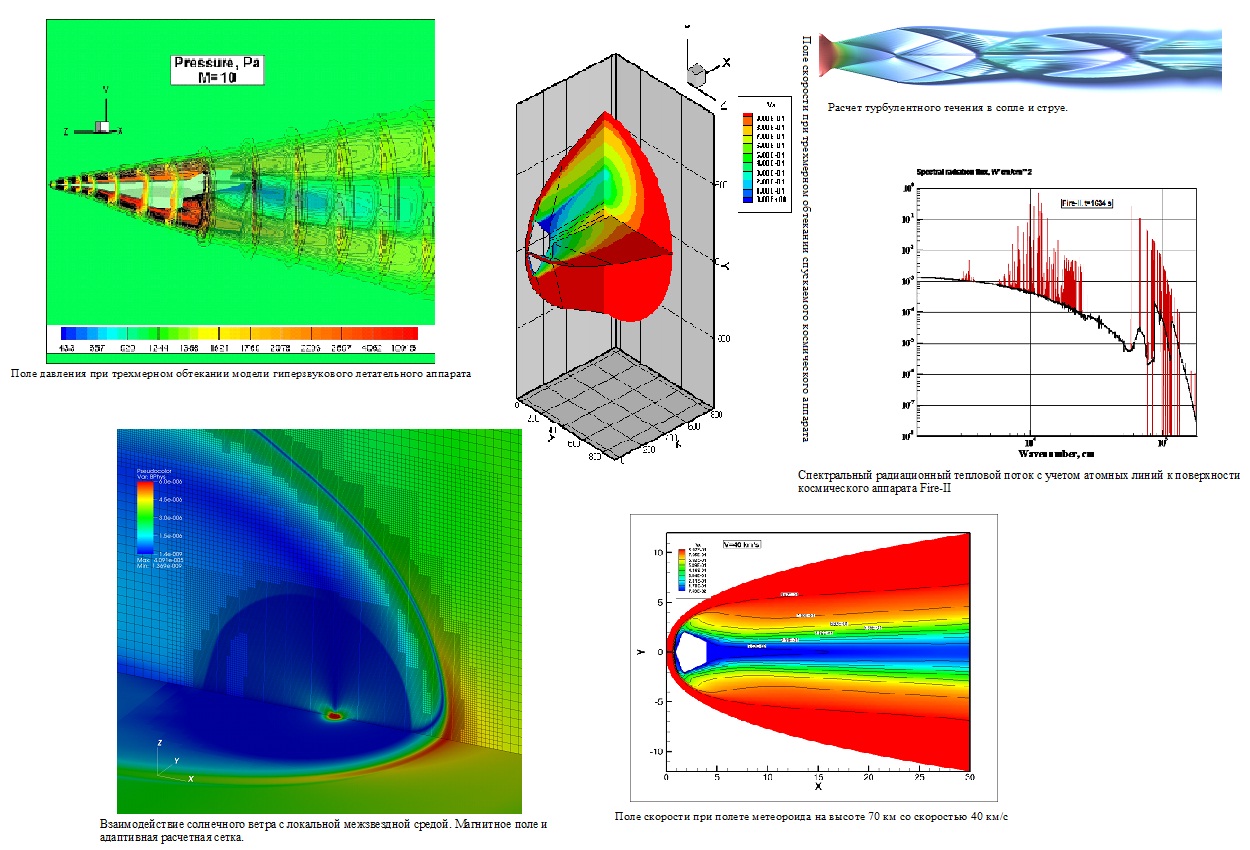Actual problems
Staff of the Department of Physical and Chemical Mechanics on the basis of the department laboratories are working under current grants (RFBR, RSF), national and international projects and contracts. When performing computational and theoretical research, staff, students and graduate students of the department do not use commercial packages. Teachers and students develop and test computing computer codes independently using modern programming languages and development tools. It is this that necessitates deep knowledge and understanding of the theory of numerical methods. Naturally, for successful solution of applied and fundamental physical problems, a thorough knowledge and understanding of physics in the corresponding subject areas (gas dynamics, plasma physics, etc.) is necessary. Below is a list of current tasks that are carried out with the involvement of students and graduate students of the department:
- Two- and three-dimensional computer radiative gasdynamic models of re-entry spacecraft designed to study the planets of the solar system and return to Earth are being developed. The indicated computer models implemented in the NERAT (Non-Equilibrium Radiative AeroThermodynamics) program codes are based on the Navier-Stokes system of equations, physical and chemical kinetics of multicomponent gas mixtures, and transfer of selective thermal radiation;
- A program complex is being developed for calculating the nonequilibrium spectral radiation of shock waves as applied to the atmospheres of the planets of the solar system, which includes self-consistent computational models for calculating the gas-dynamic parameters of shock waves, nonequilibrium physico-chemical relaxation processes behind the front of the shock wave, nonequilibrium chemical transformations in the gas mixture and nonequilibrium radiation under conditions in which distribution of particles over the excited energy states of atoms and molecules is not described by Boltzmann law. A systematic analysis of new experimental data on nonequilibrium radiation of shock waves in different media is carried out;
- The computer platform (universal computer multi-module system) ASTEROID is being developed, designed to calculate the spectral optical properties of hot gases and low-temperature plasma in relation to the problems of aerospace engineering. This computer system is based on the use of ab-initio methods of classical and quantum mechanics;
- Methods for generation of structured and unstructured two-dimensional and three-dimensional computational grids are being studied and corresponding computer codes are being developed;
- Systematic research is underway in the field of aerothermodynamics of high-speed aircrafts. Computing technologies of spatial calculations of models of real aircrafts on structured and unstructured two-dimensional and three-dimensional computational grids are being worked out;
- Work is underway to create spatial computer models intended for processes simulation in the SCRAMJET engine based on two- and three-dimensional NERAT software codes;
- Two- and three-dimensional numerical kinetic models are created based on the particle-in-cell method for studying the electrodynamic structure of gas discharges. Testing of models is carried out using the results of experimental studies of the Penning discharge;
- Three-dimensional hybrid (kinetic and continuum) and continuum (MHD) computational models are created for the numerical simulation of the interaction of plasma flows;
- Computational models for the interaction of gas discharges with hypersonic gas flows are being developed;
- Computer models of combustion and detonation processes in experimental devices and astrophysical objects are created.
Examples of problems


